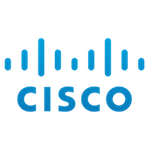Using Blockchain Technology to Solve Global Problems

As published on the Cisco Corporate Social Responsibility blog
This post was written by guest blogger Dr. Mariana Dahan, Founder and CEO of the World Identity Network. She recently spoke as part of Cisco’s Women Rock-IT series.
Today, more than a billion people around the world lack that most basic of human rights: recognized personhood. Lack of officially recognized identity (ID) impacts every aspect of life: civil, economic, educational and political, among many others. Without a valid proof of identity, many basic services are out of reach.
Critically, this represents a real danger for the most vulnerable: children, women, and migrants who have been uprooted and are fleeing poverty, violence, or war.
Without a proof of their existence, they can become “invisible” to those who could help them thrive. These “invisibles” are easy prey for human traffickers, who often use fake ID documents to transport them across borders. Once trafficked, children and adults are sold to brothels, exploited and abused, and even used for the illegal human organ trade.
The World Bank has recognized that the legal invisibility of undocumented people and unregistered children makes it more likely that their disappearance and exploitation will go unnoticed by authorities. Recognized proof of identity is the right of every single person on our planet.
The impact of extending this right to all would be overwhelmingly positive for humankind. And yet, there have long been deeply complex barriers to access. Until recently, this necessary vision for the future — where everyone on Earth has access to proof of personal, unique identity, allowing them to claim their human rights and pursue more prosperous, free, and healthy lives — was an unattainable goal.
Thankfully, a combination of awareness, international will, and technology offers new hope.
To achieve this vision, we must harness the power of innovation and leverage the opportunities presented by new technologies and approaches. Advances in unique identification tools and the emergence of distributed ledger technologies, such as blockchain technology, are shedding light on new possibilities for fighting the worst crimes against humanity.
In the specific case of fighting human trafficking, we’re using blockchain on top of existing systems to make sure that no child is taken out of the country using fake ID documents that are produced by human traffickers. The immutability feature of the blockchain — its ability to permanently record a “transaction,” such as an attempted unauthorized exit at the border — ensures that nobody can bribe their way out. If the trafficking attempt has been made, it is automatically recorded on the ledger and it is up to the law enforcement and civil society to make sure that the smuggler is prosecuted.
One step in this direction is the partnership between the World Identity Network, United Nations agencies, and a broad range of stakeholders, including private sector companies, academia, governments, and non-governmental organizations (NGOs) working together on the world’s first pilot initiative that will use blockchain technology to help combat child trafficking.
I’m particularly proud of the multi-stakeholder collaboration that the “Blockchain for Humanity” effort has fostered. It is only by working together that we will bring about positive change in the world.
Growing up as a poor child in the poorest country of Europe, and having found myself in the street at a very young age, I know firsthand what it means to be defenseless, to be hungry, to be exposed to risks.
I recently gave a TEDx Talk that reveals my personal story and motivation behind my work at the World Identity Network. It also explains how a proof of who you are can change the life you lead. Please watch the TEDx Talk to hear about my story and please visit www.win.systems to learn about other similar stories.
I have always viewed technology as a transformational tool to achieve greater social impact. But we must remember that technology itself is not a silver bullet, nor the single answer to the humanitarian challenges we face. It can act as a catalyst and provide the platform for collaboration among various stakeholders. I hope my journey inspires you to take on a career in the IT sector and use technology for social impact.

